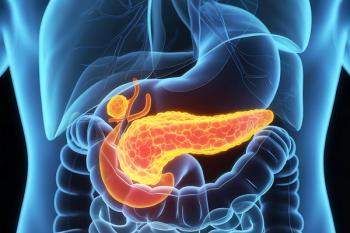
- September 2022
- Volume 18
- Issue 9
- Pages: 9
Novel Microfluidic Chip for µSEC
Researchers have developed a novel microfluidic chip for the study of extracellular vesicles using miniaturized size-exclusion chromatography.
Researchers have developed a novel microfluidic chip for the study of extracellular vesicles (EVs) using miniaturized size-exclusion chromatography (SEC) (1).
EVs are an increasingly interesting target for potential diagnostic and therapeutic applications. Important in intercellular communication and containing information such as DNA, RNA, lipids, and proteins, these phospholipid bilayer vesicles are around 50–200 nm and can contain crucial information on cell origin and
disease status.
SEC is widely used for clinical EVs isolation (2) as it is simple to operate. However, there are certain challenges with integrating upstream sample pre‑processing and downstream analysis, resulting in a major bottleneck.
One possible solution to these issues has arisen in the form of microfluidic technologies, which have been used to directly isolate EVs from complex biofluids such as blood (1). These devices have been primarily focused on the analysis of smaller biomolecules, with larger
elements such as EVs remaining unexplored. Unfortunately, on-chip sample injection and a suitable chip material are two major stumbling blocks to fully realizing miniaturized SEC for use in EV research.
Researchers identified two possible solutions for the issues surrounding on-chip sample injection through the miniaturization of commercial rotary valve injectors (3,4) or microfluidic passive injectors using cross junction (5–7) or T-junction (8) channel designs—the former requiring costly components while the latter proving sensitive to small pressure changes at low flow rates.
As to the issues with chip materials, the researchers identified thiolene polymer (UV glue NOA81) as an attractive alternative to more established materials, such as polydimethylsiloxane (PDMS), despite its fabrication difficulties.
Utilizing this knowledge, researchers developed a novel fritless microfluidic SEC device (µSEC) using thiolene polymer for EVs isolation and protein separation. The chip uses a modified T-junction with a controlled on-chip nano-litre sample plug injection. The device was then validated using fluorescent nanoparticles (50 nm), albumin, and breast cancer cells (MCF‑7)‑derived EVs. As a proof‑of‑concept for clinical applications, EVs were directly isolated from undiluted human platelet-poor plasma using μSEC. To ensure there were distinct elution profiles between EVs and proteins, nanoparticle tracking analysis (NTA), Western blot, and flow cytometry analysis were carried out.
The researchers believe the optically transparent μSEC could be readily automated and integrated with EV detection assays for EVs manufacturing and clinical diagnostics.
References
- S.Y. Leong et al., Small 18, 2104470 (2022). DOI: 10.1002/smll.202104470
- R.E. Lane, D. Korbie, M. Trau, and M.M. Hill, Proteomics 19, 1800156 (2019).
- H. Yin and K. Killeen, J. Sep. Sci. 30, 1427 (2007).
- H. Yin et al., Anal. Chem. 77, 527 (2005).
- S.C. Jacobson et al., Anal. Chem. 66, 1107 (1994).
- S.C. Jacobson et al., Anal. Chem. 66, 3472 (1994).
- X. Bai et al., Lab Chip 2, 45 (2002).
- Z. Wang et al., J. Sep. Sci. 33, 2568 (2010).
Articles in this issue
over 3 years ago
Trends and Developments in Sample Preparationover 3 years ago
Rising Stars of Separation Science: Simona Fellettiover 3 years ago
Agilent Acquires Polymer Standards Service (PSS)over 3 years ago
Chiron Announces New North American Distribution Agreementsover 3 years ago
Oliver Jones Receives 2022 Barry Inglis Medalover 3 years ago
Vol 18 No 9 The Column September 2022 North America PDFNewsletter
Join the global community of analytical scientists who trust LCGC for insights on the latest techniques, trends, and expert solutions in chromatography.





